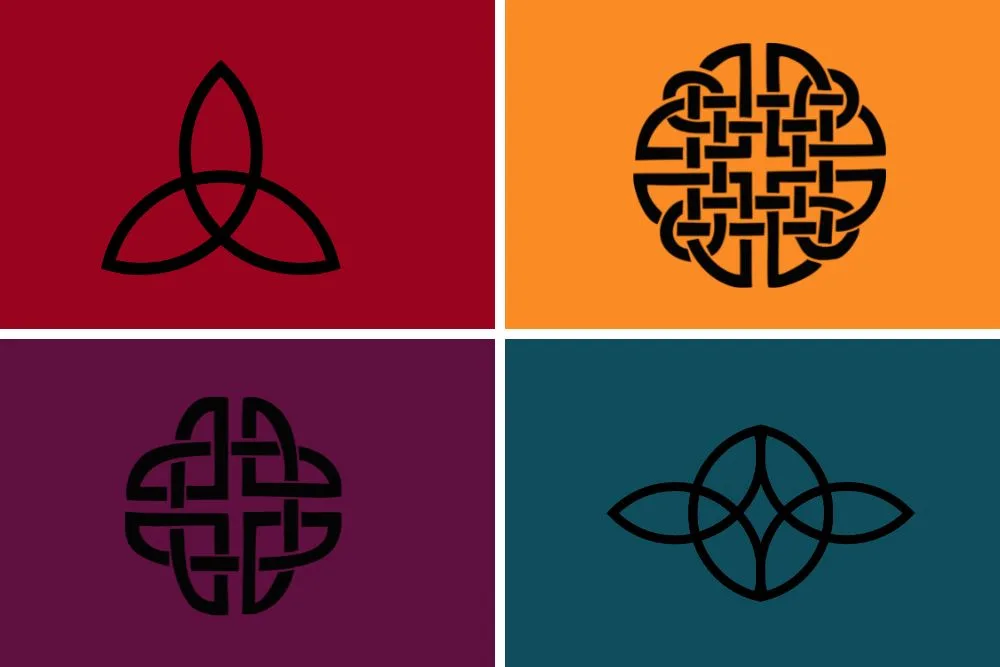
Table of Contents
- 1 Celtic Knots
- 2 Celtic Knots and Ireland
- 3 List of Celtic Knots
- 4 Celtic Knot Meanings: What is known?
- 5 Triquetra or Trinity Knot
- 6 Triskelion
- 7 Celtic Love Knot
- 8 Serch Bythol
- 9 Dara Knot
- 10 Celtic Shield Knot
- 11 Celtic Sailors Knot
- 12 Celtic Motherhood Knot
- 13 Celtic Knot Patterns
- 14 List of Celtic Patterns
- 15 Celtic Interlace Pattern
- 16 Celtic Spiral Patterns
- 17 Key or Step Patterns
- 18 Maze Patterns
- 19 Frequently Asked Questions – Celtic Knots
Celtic Knots
In terms of ancient Celtic symbols, some of the most recognisable decorative designs are Celtic Knots, or Icovellavna.
The intricate motifs of Celtic Knots with interwoven looping strands that do not have a clear beginning or end are symbolic of unity, eternity and the continuum of life.
Celtic Knots and Ireland
Ireland was one of the main hotspots of Celtic knot design during the 6-9th centuries.
Irish Celtic knot design flourished and became more complex and sophisticated.
Celtic knots were used as an elaborate form of decoration on metalwork, stonework and illuminated manuscripts.
From around the time of the Viking raids on monasteries in the 9th century, the use of Celtic knots in Ireland began to decline.
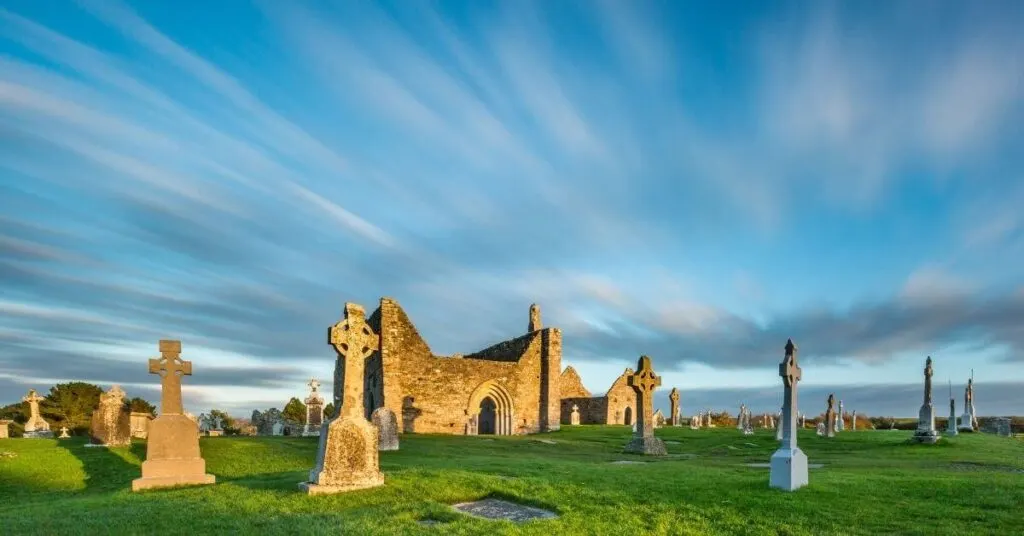
Some of the last known examples of Irish Celtic knots date back to the 12th century and are found on Celtic Crosses.
This complex artwork and its meanings were largely forgotten about until the Celtic Art Revival of the late 19th century.
From this point onwards there was a renewed focus on Irish Celtic cultural heritage for both Irish people and people abroad.
Much of the knowledge, traditions and meaning associated with Celtic knots has been lost through the generations, due in part to the oral transfer of knowledge in Celtic culture.
As a result, there has been a lot of interpretation and educated guess work involved in deciphering Celtic knots and their meanings as accurately as possible.
This article will guide you through the most well known types of Celtic knots and Celtic patterns.
It will also provide thorough insights into the origins, history and meanings of Celtic knots.
List of Celtic Knots
- Celtic Trinity Knot (Triquetra)
- Celtic Spiral Knot (Triskelion or Triskele)
- Celtic Love Knot (Serch bythol)
- Dara Knot
- Celtic Shield Knot
- Celtic Sailors Knot
- Celtic Motherhood Knot
Celtic Knot Meanings: What is known?
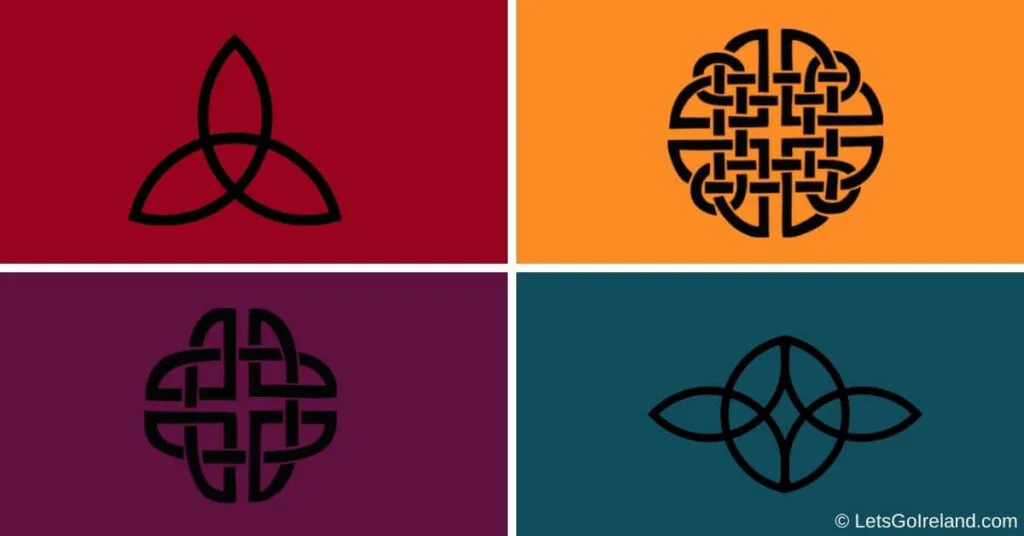
It is difficult to decipher the original meanings of Celtic knots because the Celts had a tradition of passing knowledge from one generation to the next by word of mouth.
Even the druids, who were high-ranking, educated Celts, were not permitted to leave written accounts.
The information available today about Celtic knots, as well as Celtic design and meaning stems from the interpretations of scholars.
It is educated guesswork and often open to discussion and personal interpretation.
The true meaning Celtic people had for their knots may not yet, or ever be completely understood.
One idea behind Celtic knot meanings is that knotwork developed as an abstract, decorative or ornamental form of art to fill in borders and blank spaces in the very stylized Celtic designs originating from this time.
Other prevalent ideas behind the meaning of Celtic knots without a beginning or end are connected with the idea of the continuous cycle of life, death and rebirth or the three states of mind, body and spirit.
The weaving of strands over and under each other in interlace patterns is thought to possibly represent connections in life between the real, physical world and otherworld.
Today, many meanings have been attributed to Celtic knots, particularly online.
This brought confusion about the most accurate meaning Celtic knots have in relation to their symbolism and spirituality.
A lot of meanings associated with Celtic knots are not based on hard evidence and are entirely fictional, so it is worth being critical of what you read and believe.
Triquetra or Trinity Knot

The Triquetra or Trinity Knot is one of the most recognisable and simple of all the Celtic knots.
Other names for this knot include the Celtic Trinity Knot and the Trefoil knot which comes from the three leaves of the clover or trefoil plant.
It consists of three arcs that overlap with each other. As there is no clear beginning or end to the design, it is called a “true” knot.
This ancient symbol is thought to be several thousand years old, with some of the first known examples originating in Persia and Anatolia about the 4th century BCE.
One common newer variation is the triquetra knot with a circle around the arcs. This additional feature is not part of the knot itself.
It is likely that this ring was probably added by Christians, with the intention of placing greater emphasis on the unending meaning of the Holy Trinity and eternal life associated with this symbol.
The Celtic Insular art period in Ireland and Britain had its high time between the 6-9th centuries.
During this time, the Triquetra was frequently used as a form of ornamentation in interlace patterns found in illuminated manuscripts.
The triquetra symbol is also found independently in Japanese Buddhist culture.
Triquetra Meaning
The mainly oral tradition of transferring knowledge between generations in the Celts means that the exact meanings and symbolism behind the Triquetra and other Celtic knots have been lost over history.
There are different interpretations of its meaning.
It is likely to have been a Celtic pagan symbol that was later incorporated into Christian teachings of the Holy Trinity.
One idea is that the Triquetra symbolizes the continuum of life, death and rebirth through its continuous flowing design.
Other popular suggestions align the three-pointed knot with the belief that each arc represents either the mind, body or spirit and they are connected with interwoven lines.
Alternative suggestions also put forward that the three arcs signify the domains of the sky, earth and water.
The general concept thought to be behind this Celtic knot meaning is three entities in one symbol.
This concept fits the idea of the Holy Trinity in Chrisitianity, which is why the Triquetra is likely to have been adopted as a Christian symbol and integrated into the teachings of the early Christian church.
By association with the Father, Son and Holy Spirit, the Triquetra became known as the Trinity Knot.
The everlasting meaning of the Trinity Knot was taken one step further by adding a Trinity circle around it.
Uses of the Triquetra
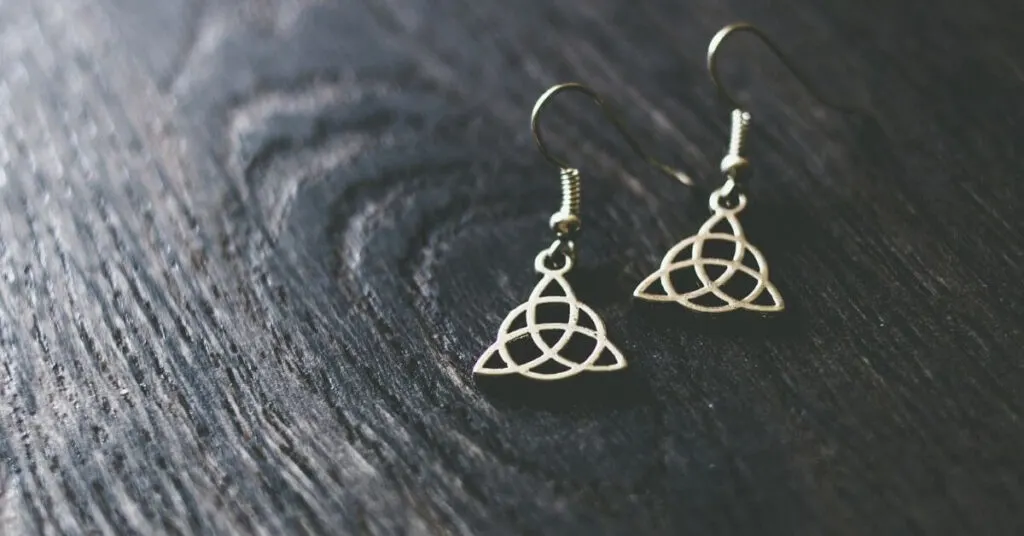
(Photo: © Second Floor via Canva)
Even to this day, the Triquetra is one of the most popular of all Celtic knots.
The design is often used to embellish items of jewelry such as Claddagh rings and wedding rings, as well as other ornaments, clothes and souvenirs.
The Triquetra or Trinity knot tattoo has gained popularity in recent years as well.
Is the Triquetra the Celtic symbol for family?
The Celts are unlikely to have had Celtic symbols for family.
Regardless of what you read online or elsewhere, there is no definitive celtic symbol for family or celtic knot for family.
The Triquetra is a symbol composed of unique different parts that unify as one for eternity.
Some people like to interpret this meaning of the Triquetra as being closely aligned to that of family unity and suggest that it is a possible representation of a Celtic family knot.
Triskelion
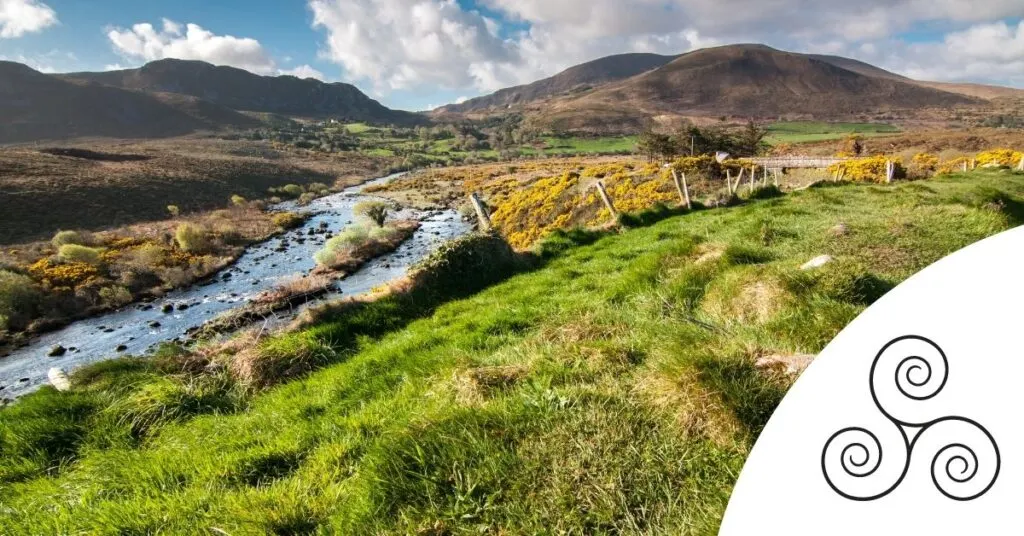
(Photo: © yktr, symbol: © Albinopanther both via Canva)
The three-pronged spiral of the Triskelion is one of the oldest known of all man made designs with evidence of its usage pointing back at least 3200 BCE.
Just for clarification, the Triskelion is also known as the Triskele, Celtic Triskele, Threefold Spiral and the Celtic Spiral Knot.
The name Triskele, stemming from the Greek meaning for “three legs” is probably the oldest form of the name, although the term Triskelion has been in widespread use since about the 19th century.
Triskelion Origins
It is clear that the origins of this ancient symbol are even older than the Celts.
Similar tri-spiral designs have been found carved in the Megalithic or Stone Age art in other cultures such as the Tarxien Temples in Malta and the Irish burial-passage of Newgrange in County Meath.
Newgrange was constructed in about 3200 BCE, before the Celts arrived in Ireland. (The burial tomb is older than the Pyramids if you need a reference point).
Celtic art design was greatly influenced by nature and all things associated with the number three.
The triple spiral, which bears a resemblance to tendrils of foliage, became one of the key features of the La Téne style of Celtic art. This art style existed across large parts of Europe between around 500-100 BCE.
Other key elements of the La Tène art style include curvilinear (or curved line) patterns, spirals and trumpet-like shapes.
While the Celts cannot claim to have created the original motif, they are credited as being responsible for greatly enhancing the sophistication and complexity of this design, which is instantly recognisable as a Celtic symbol.
Triskelion Meaning
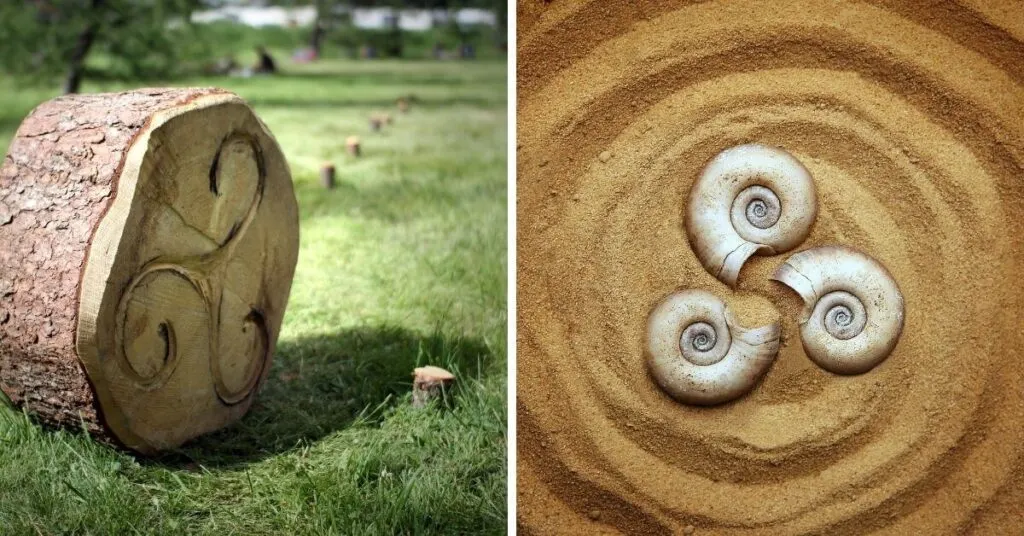
(Photo: © Libero Api (L), vaitekune (R))
Scholarly interpretations behind the meaning of the Triskelion differ and are often debated.
It is likely that this ancient Celtic symbol held great significance, because of the triple spiral association with the revered number three in Celtic mythology and culture.
Some believe that the Celtic Triskelion meaning was connected with the druids and possibly stood as a symbol for them.
Other interpretations behind the Triskelion meaning are based upon the pagan belief system, where each one of the spirals denotes a different world within one united symbol.
The first spiral represents the real or physical world, the second stands for the world of the ancestors, spirits and gods and the third spiral is representative of the cosmic world of stars, planets as well as the sun and moon.
Alternative suggestions also put forward the idea that the Triskelion represents the connectedness of water, earth and sky.
Triskelion Direction
The direction of the spirals in the Triskelion are likely to have also been significant.
Some scholars suggest that when the spiral of the Triskelion is clockwise, the Celtic belief was that the flow of energy is in harmony as it travels from the center outwards.
Anticlockwise Triskelions draw the energy inwards, and may have represented less harmonious or even more manipulative connotations associated with them.
Celtic Love Knot
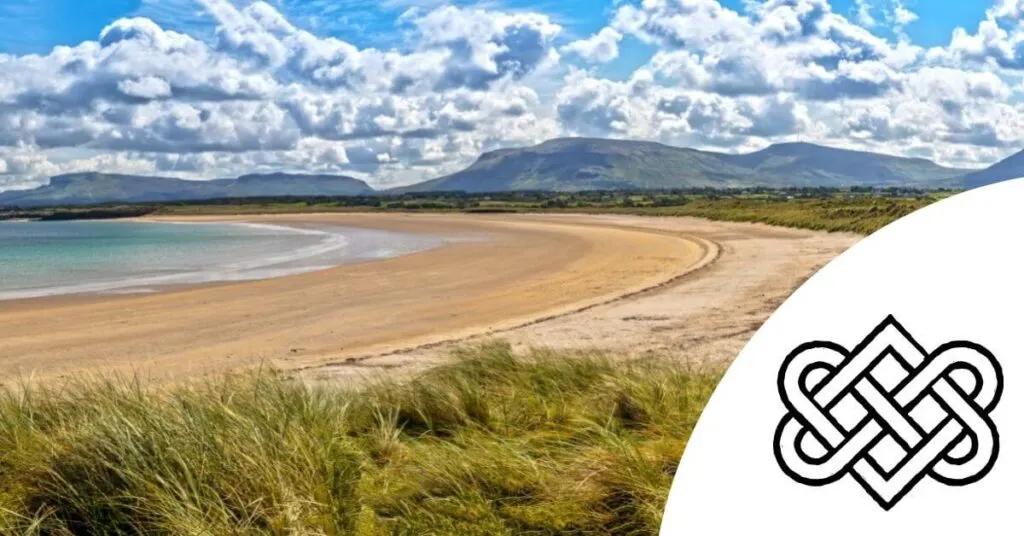
(Photo: © Susanne Neumann, symbol: © javiruizmart both via Canva)
When it comes to symbols of love, celtic knots with their infinite interlaced designs are very popular.
A search for Celtic Love Knot, Irish Love Knot or Celtic Lovers Knot online, will present several different stylized variations of a Celtic heart-style knot.
One variation features two interlocking hearts, with one pointing upwards and the other downwards.
An alternative design places an interlocking heart in the middle of the Triquetra.
Celtic Love Knot Meaning
The Celtic Love knot meaning in both variations is the same and symbolizes an unending bond of love, which is why both are used as celtic wedding knots.
It is likely that this knot (and its variations) is a modern creation that has evolved from Celtic symbols, but is not an ancient Celtic symbol in the true sense.
While they do appear to have Celtic design attributes, such as the unending interlace design, there appears to be little scholarly information about these Celtic knots.
If you know otherwise, please let us know!
Serch Bythol
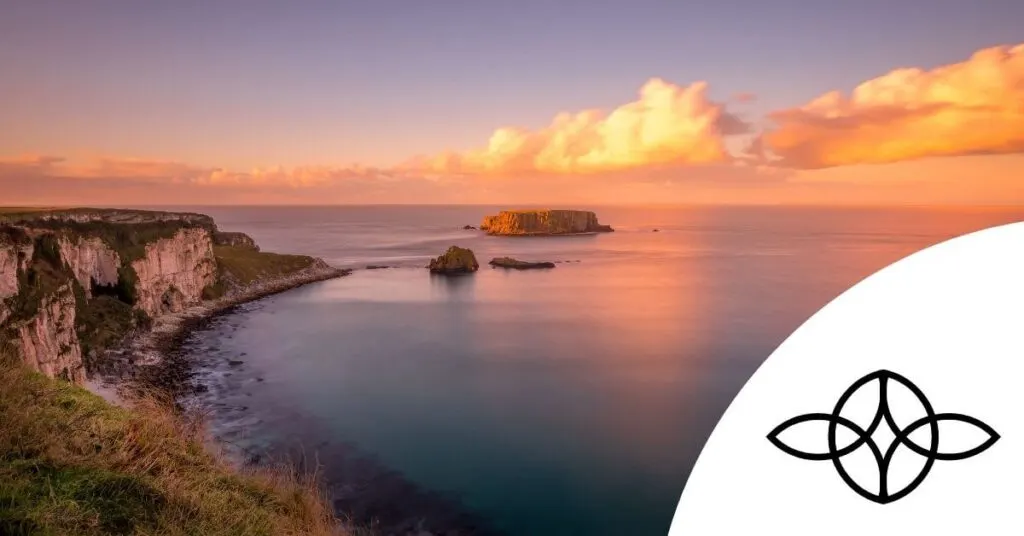
(Photo: © Kai-Marco Fischer, symbol: Clker-Free-Vector-Images both via Canva)
The Serch bythol symbol consists of two triquetras placed on their sides, thus allowing the arcs to form a ring or circle.
In this sense, it forms a true, unending knot with overlapping strands.
Is the Serch Bythol the Celtic Symbol for everlasting love?
There are many meanings attributed to this symbol online.
The Welsh origin of the name Serch Bythol (serch meaning love and bythol meaning endless or perpetual) supports the suggestions of this being a Celtic symbol of everlasting love.
However, there appears to be little reliable, scholarly information available about the Serch bythol Celtic symbol.
Dara Knot
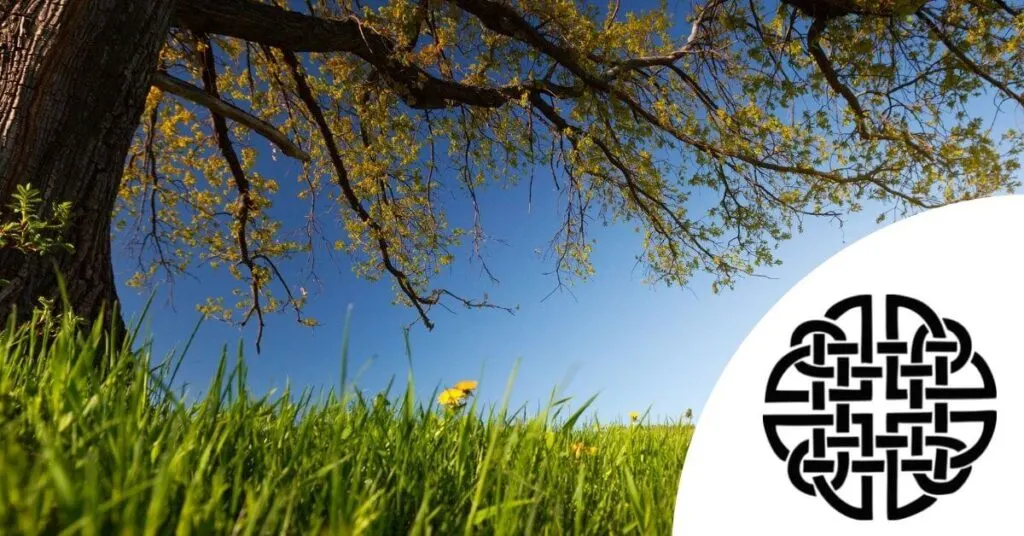
There are many different variations of the Celtic Dara knot in circulation.
Generally, the design of the Dara knot symbol usually follows a circular pattern with a repetitive, unending interwoven design, often repeated four times, once in each quadrant.
Dara Knot Meaning
In the Irish language, the word for “oak grove” is “doire”, which has given rise to the term “dara” used in the Dara Celtic knot.
The intricate interwoven strands of the knot are said to symbolize the extensive root system of the oak tree.
Dara Knot History and Origins
As the most revered of all trees, the Celts believed the oak to be a symbol of strength, wisdom and longevity.
Due to the belief that oaks accumulate wisdom over the course of their long lifetime, they were seen to be exceptionally strong, resilient and able to endure, as well as persevere in difficult circumstances.
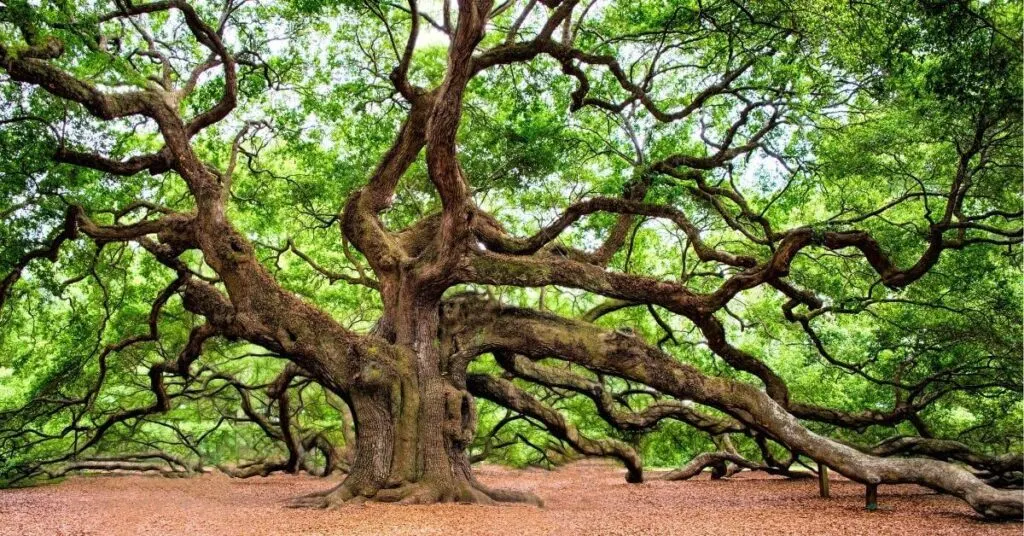
Is the Dara knot the Celtic Symbol of strength?
Due to the lack of written accounts from the period, it is not possible to say with certainty if the Celts had a symbol for strength.
Traditionally, the Dara knot is associated as being the Celtic symbol for strength. However, some questions do arise about the authenticity of the Dara knot as an ancient Celtic knot.
It is quite likely that it is a more modern motif based on older types of knot Celtic people designed.
Dara Knot Symbol
As one of the most recognisable of all Celtic knots, the Dara knot is a popular Celtic symbol motif in pendant, ring and necklace jewelry design.
Given the association with the Celtic symbol for inner strength, strength and courage, the Dara knot tattoo is also in vogue.
Find out more about Celtic Symbols for Strength and inner strength here.
Celtic Shield Knot
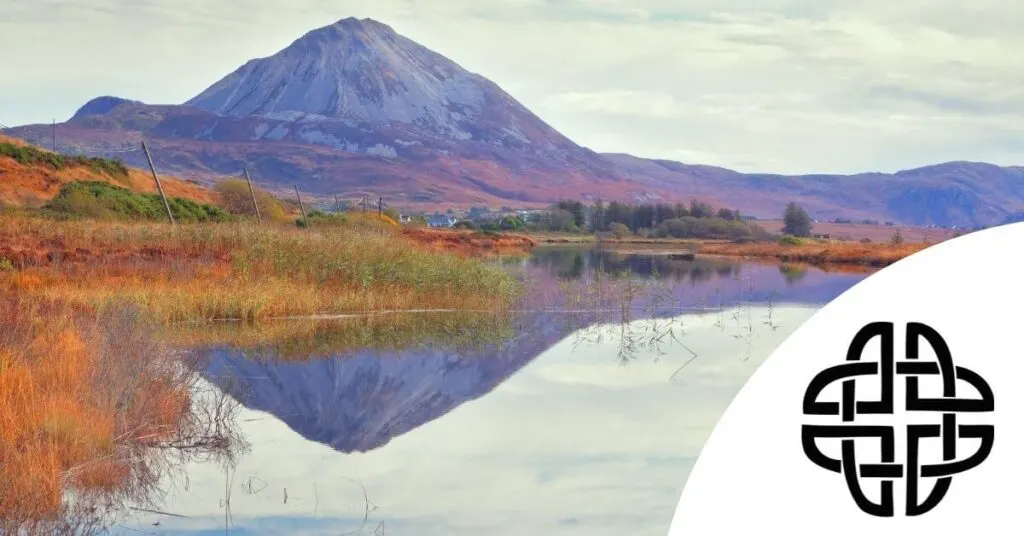
(Photo: © mammuth, symbol: © 35393 both via Canva)
The origins of the Shield knot are likely to date back to before the time of the Celts.
Over the course of history, the shield knot has become associated with the Celts and other Celtic knots.
Some of the first known examples of shield knots were found near the Fertile Crescent of what is now known as the Middle East.
Regarding the Shield knot design, there are many variations of this fourfold type knot.
The principle factor is that each Shield knot has four distinct corners and these four corners are often encircled in a ring.
Is the Celtic Shield Knot the Celtic symbol for protection?
Several stories have arisen regarding the symbolism and meaning of the Celtic Shield knot.
One view suggests that this knot was a Celtic symbol for protection as it aimed to ward off evil spirits, especially if it was placed next to those injured on the battlefield.
As with all of the interpretations into meanings of Celtic knots, the lack of hard evidence makes it almost impossible to pinpoint the exact meaning.
Celtic Sailors Knot

(Photo: © KeithSzafranski, symbol: © javiruizmart both via Canva)
The basic principle behind the Celtic Sailor’s knot is that it consists of four points and has two interlooping strands.
In terms of functionality, this knot is one of the simplest and strongest to create.
This could support the idea that sailors were the ones to have developed this knot, though the history and origins of this knot are unclear.
Celtic Sailor’s Knot Meaning
Some people attribute the Sailor’s knot meaning to be symbolic of harmony and friendship with loved ones.
As with many Celtic knot meanings, there is no direct evidence for this interpretation.
The elegant design is often incorporated into the bands of wedding rings and other jewelry or as an armband Celtic Sailor knot tattoo.
Celtic Motherhood Knot

The Celtic Motherhood knot is a stylized variation of the Triquetra or Trinity knot.
It can feature two or more heart shapes interlaced in one another in the form of an unending knot.
Some versions of the Celtic motherhood symbol attribute the number of hearts to the number of children the mother has had.
Again, like many other so-called Celtic knot symbols, these are modern creations that were not used by the Celts themselves.
There are many stylized variations of Celtic Motherhood knots available online, but there is no clear “true” version. The representation shown in the image above is one of the more simpler modern design.
Inspiration behind the Celtic Motherhood Knot
The inspiration for the Celtic symbol for motherhood is likely to have come from the original Celtic knot designs, but the knot symbol itself was created more recently.
In order to set the record straight, the same can be said about the origins of the Mother Daughter Celtic knot, Mother Son Celtic knot, Father Daughter Celtic knot or any other parent child Celtic knot combinations.
Please be aware that there is a lot of inaccurate information circulating online about Celtic knots and Celtic symbols.
Celtic Knot Patterns
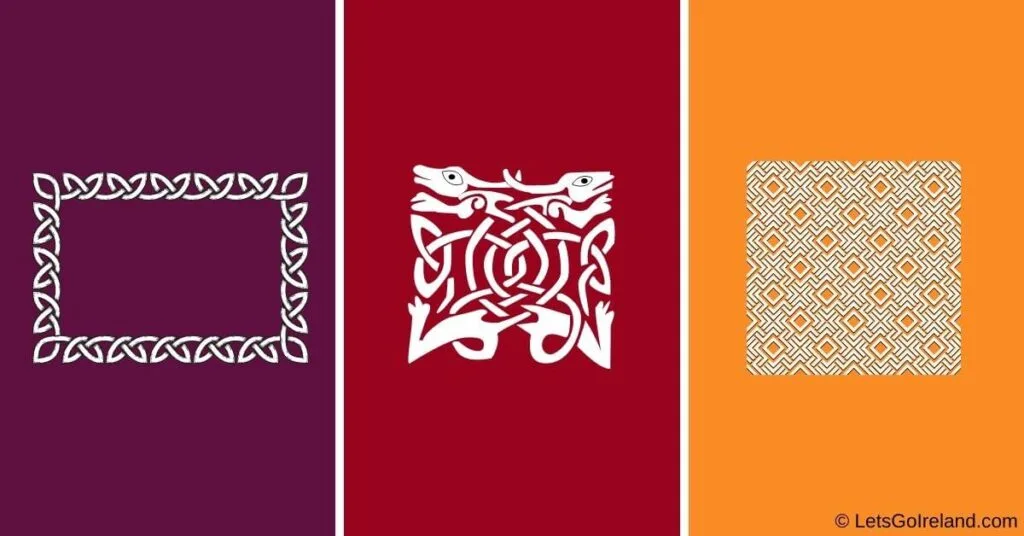
Up until the early 20th century, the complexity and construction of Celtic knot pattern design was not fully understood.
The artist George Bain was among the first to disentangle the intricity of ancient Celtic patterns using a mathematical approach in his book first published in the 1950s.
List of Celtic Patterns
- Celtic Interlace Pattern
- Celtic Spiral Pattern
- Key or Step Pattern
- Maze Pattern
Celtic Interlace Pattern
Celtic interlace patterns consist of knotwork patterns or animal shape (or zoomorphic) patterns.
Scholars tend to believe that the unending Celtic knotwork most likely originated in Byzantine due to the resemblance of the styles.
Coptic artwork from Egypt and Syria from around this time used similar continuous interlace patterns (without a beginning or an endpoint) and the alternating coloring techniques when stands pass over each other.
Zoomorphic interlace patterns are more complex. They tend to follow the same pattern of alternating bands as the knotwork patterns, with the start and end points usually shown in the form of animal heads or tails.
This style of interlace is more likely to have its origins in the Germanic Anglo-Saxon tradition of art.
Celtic Knot Pattern Meanings
There are generally thought to only be about eight knot types that are used in different ways to create Celtic interlace knotwork.
Knotwork patterns utilize one continuous line of alternating bands that have no real beginning or end to the pattern.
The Trinity Knot is one of these basic fundamental knots.
Celtic Spiral Patterns
Spiral patterns are seen throughout pre-Celtic, as well as Celtic art.
Ancient Irish symbols, such as the spirals found in the burial tomb of Newgrange in the Boyne Valley, County Meath date back to the Neolithic period (3200 BCE) and are among the oldest in the world.
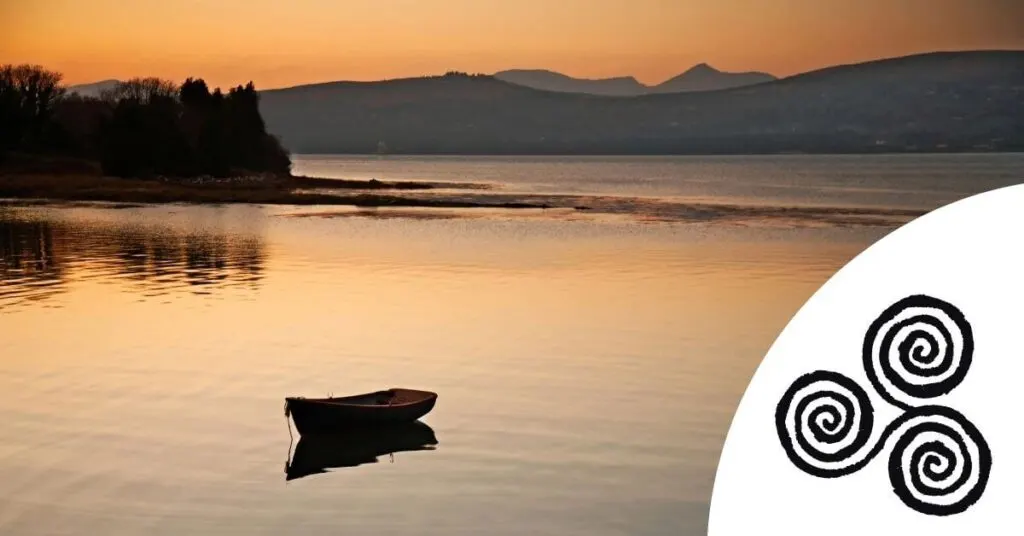
(Photo: © Walshphotos, symbol win win.artlab both via Canva)
The Celts are likely to have adopted and adapted spirals in different forms to suit their artistic requirements and symbolic representations. (Read more about Celtic spirals here)
Spirals were advanced even further by monks for use in religious manuscripts. This can be seen in the progression of complexity from the Durham Gospels (ca. 650 CE) through to the Book of Kells (ca. 800 CE).
Many Irish high crosses or Irish Celtic crosses also feature complex interlocking spiral patterns including the Saint Mullins Cross in County Carlow and Drumcliffe High Cross, County Sligo.
Generally, spirals were interlocked with either an “S” or a “C” linking pattern.
Various combinations of single, double, triple or even quadruple spirals were used in ornamentation.
Key or Step Patterns
Key patterns (or step patterns) are essentially the same design of spiral patterns with the exception that they follow one line.
Maze Patterns
Like the maze patterns found in other ancient civilizations cultures such as the Mayan and Aztec, Celtic maze design features interlocking straightline labyrinths.
The complexity of these maze patterns were greatly furthered by the skillful monks of the early Christian times.
Aidan Meehan’s book Celtic Design: Maze Patterns illustrates clear examples of this type of Celtic pattern.
Frequently Asked Questions – Celtic Knots
What are Celtic Knots?
Celtic knots are interlace patterns and graphical representations of bands that contain a series of complete loops woven under and over each other in an alternating fashion.
True Celtic knots have no visible beginning or end point and use one continuous line to create loops, braids and plait work.
Stylized Celtic knot artwork was often used in combination with nature inspired designs and images to form complex spatial designs.
The most famous example of this is the illuminated manuscript of the Book of Kells, particularly the Chi/Rho page.
Celtic knots are sometimes called Gaelic knots.
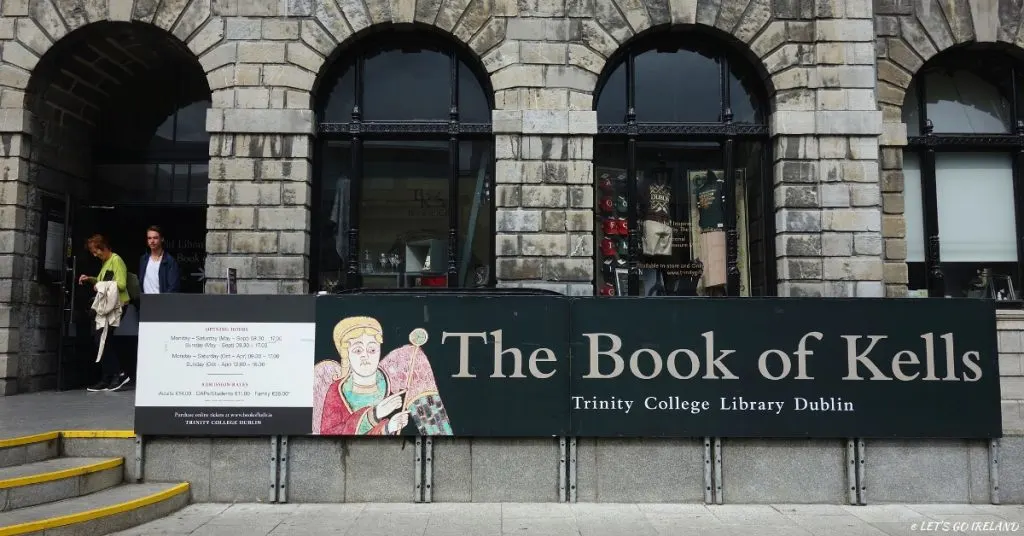
What do Celtic Knots symbolise?
Due to the seemingly endless nature of the knot design, Celtic knots are often thought of as symbols of eternity, unity, and connectivity.
They feature as popular representations for love, everlasting love, loyalty and friendship.
Where do Celtic Knots come from?
Pre-Christian Celtic art is thought to consist largely of geometric shapes, spirals and triskeles stemming from the La Téne period of Celtic art.
Following the arrival of Christianity in Ireland about the 5th century, new concepts and art designs, such as interlace knot patterns filtered into the country through the movement of people, missionaries and ultimately books from Europe to Ireland.
The exact origins of knots and interlace patterns is difficult to pinpoint.
Some of the earliest known examples of interlace patterns date back to around the 4th century.
Examples of interlace designs have been found in floor tiles from the Romans in Northern Italy, as well as artwork and architecture from the early Byzantine Empire.
Why is Ireland famous for Celtic Knots?
From about 600 BCE Celtic art in Ireland and Britain started to undergo exciting developments, which would later become known as Insular Art (or Hiberno-Saxon art).
Celtic Knotwork became a key decorative pattern in Insular art. Animal shapes or zoomorphs are also frequently observed.
Different variations are frequently seen, for examples on the Irish knots found in metalwork (Ardagh Chalice), stone carving (Celtic Cross knots like those on Drumcliff High Cross) and illuminated manuscripts (Book of Durrow) from roughly the 7th-12th centuries.
If you would like to learn more about manuscript illumination in Ireland during this time, this article is a good starting point.
How do I learn to draw Celtic Knots?
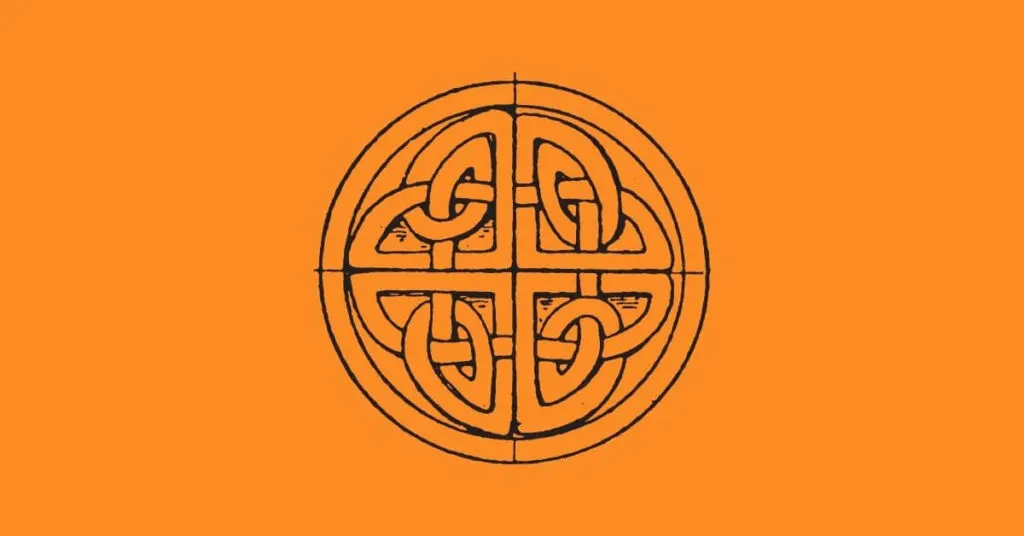
For those of you who wish to learn how to draw Cetlic knots, there are several resources available. In addition to the endless Youtube videos on the topic, the books from Aiden Meehan are a good place to start.
For beginners, with an interest in learning the general basics of Celtic art and design, this book, The Celtic Design Book, is an appropriate choice.
Where can I find ideas for Celtic Knot Tattoos?
For those of you looking for some authentic Celtic knot tattoos, please be wary of what you read online.
There is an awful amount of fake information available regarding Celtic Knot symbolism, Celtic knots with meanings and Irish Celtic symbols, particularly in relation to Celtic sign tattoos.
These two books by Aideen Meehan are filled with Celtic knots, images and designs that were created to help people learn how to draw Celtic knots, patterns and plaitwork and apply them to craftwork.
While they do not relate directly to tattoos or tattoo design, they may also be of interest to people searching for Celtic tattoo designs, or at least provide some inspiration on what designs are authentic.
If you would like to delve deeper into Celtic Symbols and their unique meanings, read all about them in our post.
This post may contain affiliate links. If you click on one of them, we might receive a small commission (at no extra cost to you). Thanks for your support!
